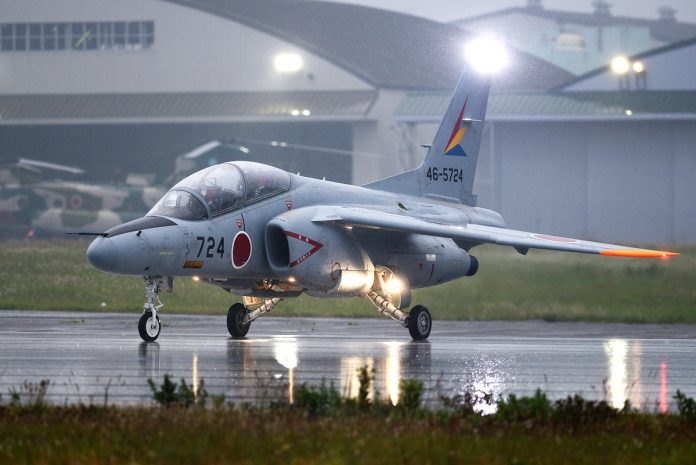In the wake of North Korea’s latest nuclear weapons test on 3 September, the Japan Air Self Defence Force scrambled a number of aircraft equipped with air-sampling pods in an effort to gather data that would help to assess the technology, size and yield of the North Korean bomb.
The aircraft included at least one Kawasaki T-4 intermediate trainer, carrying long range fuel tanks underwing, and equipped with a sampling pod slung under the centerline. The pod is designed to collect any radioactive particles in the atmosphere, thereby confirming the nuclear test and providing evidence for more detailed analysis.
North Korea has conducted five previous nuclear tests in 2006, 2009, 2013 and in January and September 2016, and claimed that the January 2016 test (like the latest event) was of a hydrogen bomb.
Seismic analysis seems to indicate that the yield of the bombs has increased, with the September 2016 test apparently involving a device with an explosive yield of between 10 and 30 kilotonnes and the latest test registering about 100 kilotonnes.
After the last test, the JASDF deployed a Lockheed C-130H Hercules from Komaki air base and four T-4s from Misawa, Hyakuri, Tsuiki and Komatsu air bases on air sampling missions. These were undertaken for about 14 days after the blast.
Japan’s own sampling effort is likely to be augmented by one of the USAF’s pair of WC-135C Constant Phoenix sampling aircraft. These fly in direct support of the US Atomic Energy Detection System, a global network of nuclear detection sensors that monitor underground, underwater, space-based or atmospheric tests.
There is still no consensus as to whether North Korea is capable of miniaturising a nuclear device sufficiently to allow it to be delivered via one of the intercontinental ballistic missiles that Pyongyang has been testing. North Korea’s Hwasong-14 (KN-20) long-range, road transportable ICBM, tested on 4 and 29 July 2017, has an estimated range of 6,700–10,000 km (4,200–6,200 m) sufficient to threaten Alaska or Hawaii.
by John Lake













